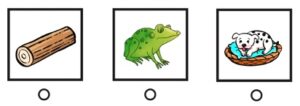WIAT-4 (WIAT-IV) Achievement Testing – Oral Language
What includes in WIAT-4 (WIAT-IV) Oral Language?
The Oral Language Composite section of the WIAT-4 (WIAT-IV) measures an individual’s ability to use language effectively in a variety of contexts. This section represents an overall level of your child’s oral language function.
The WIAT-4 (WIAT-IV) Oral Language subtest consists of three primary components: listening comprehension, oral expression, and basic concepts. The listening comprehension component assesses an individual’s ability to understand and follow spoken instructions and to answer questions based on spoken information. The oral expression component assesses an individual’s ability to use language effectively to express thoughts and ideas, tell stories, and answer questions. The basic concepts component assesses an individual’s understanding of language concepts such as synonyms, antonyms, homophones, and the ability to recognize and produce the sounds of letters and combinations of letters in words.
WIAT-4 (WIAT-IV) Oral Language subtests consist of phonemic proficiency, listening comprehension, and oral expression. Below are some of the sample questions.
Want to try us out? Sign up for a free account today and get 100 practice questions.
Phonemic Proficiency
This section measures the development of phonological skills. Your child will respond orally to questions presented via audio recording. The questions require the manipulation of sounds within words. The score for this section is determined by both speed and accuracy.
Sample Question #1: Parents, read each question to your child and ask them to choose the best answer. Questions are in blue at the bottom of each page.
Listen to this word. l – og. Choose the picture that has the name that I am saying: l – og.
Answer: 1st image (log)
Sample Question #2: Read the question to your child to see if they can manipulate the phoneme(s) as requested. When you read the question, make the letter sound when the letter is presented like this: /c/. Here, you would make the c…c…c sound rather than reading the name of the letter c.
Say the word “superman.”
Now say “superman” but don’t say “man.”
Answer: The child says, “super”.
Sample Question #3: Read the question to your child. Have them say the word and then say it backwards.
Say the word “am.” Now say the word “am” but say it backwards.
Answer: The child says, “ma”.
Sample Question #4: Read the question to your child to see if they can manipulate the phoneme(s) as requested. When you read the question, make the letter sound when the letter is presented like this: /c/. Here, you would make the c…c…c sound rather than reading the name of the letter c.
If you change the /c/ sound in the word ‘can’ to a /p/ sound, what new word do you get?
Answer: The child says, “pan”.
Listening Comprehension
This section assesses a student’s listening comprehension at the word, sentence, and passage levels. It tests receptive vocabulary, the ability to choose the picture that best illustrates the meaning of a word, and oral discourse comprehension, the ability to respond aloud to oral comprehension questions about a passage.
Sample Question #1: Read the sentence or short paragraph to your child. Then ask your child the question that follows.
Adults have thirty-two permanent teeth in their mouths. Teeth are made of enamel. We chew with our molars.
Q: How many permanent teeth do grown-ups have in their mouths?
Answer: 32
Q: What do we chew with?
Answer: Molars
Q: What are teeth made of?
Answer: Enamel
Sample Question #2: Read the sentence or short paragraph to your child. Then ask your child the question that follows.
The Poles are regions at the top and bottom of the earth. The North Pole is at the top of the earth. The South Pole, also called Antarctica, is at the bottom. Penguins live in Antarctica. They are the coldest places on the planet.
Q: What is the pole on the top of the earth called?
Answer: North Pole
Q: What is the pole on the bottom of the earth called?
Answer: South Pole or Antarctica
Q: What animals live in Antarctica?
Answer: Penguins
Oral Expression
This section measures oral expression at the word and sentence levels. Your child will be assessed on their expressive vocabulary, the ability to identify the correct picture that matches a definition, oral word fluency, naming as many items as possible in 60 seconds within a given category, and sentence repetition, listening to a sentence then repeating it back verbatim.
Sample Question #1:Parent, say: “What is this?” 
Answer: The child says “apple”.
Sample Question #2: Parent, say this: I am going to describe something to you. You tell me what I am describing to you.
What is something that has whiskers and meows?
Answer: The child says, “cat”.
Want to try us out? Sign up for a free account today and get 100 practice questions.
See if TestingMom.com supports your child’s test by your school district. If you don't see your child's school district listed, check with us! We have practice for other tests as well.



Tell us about your experiences